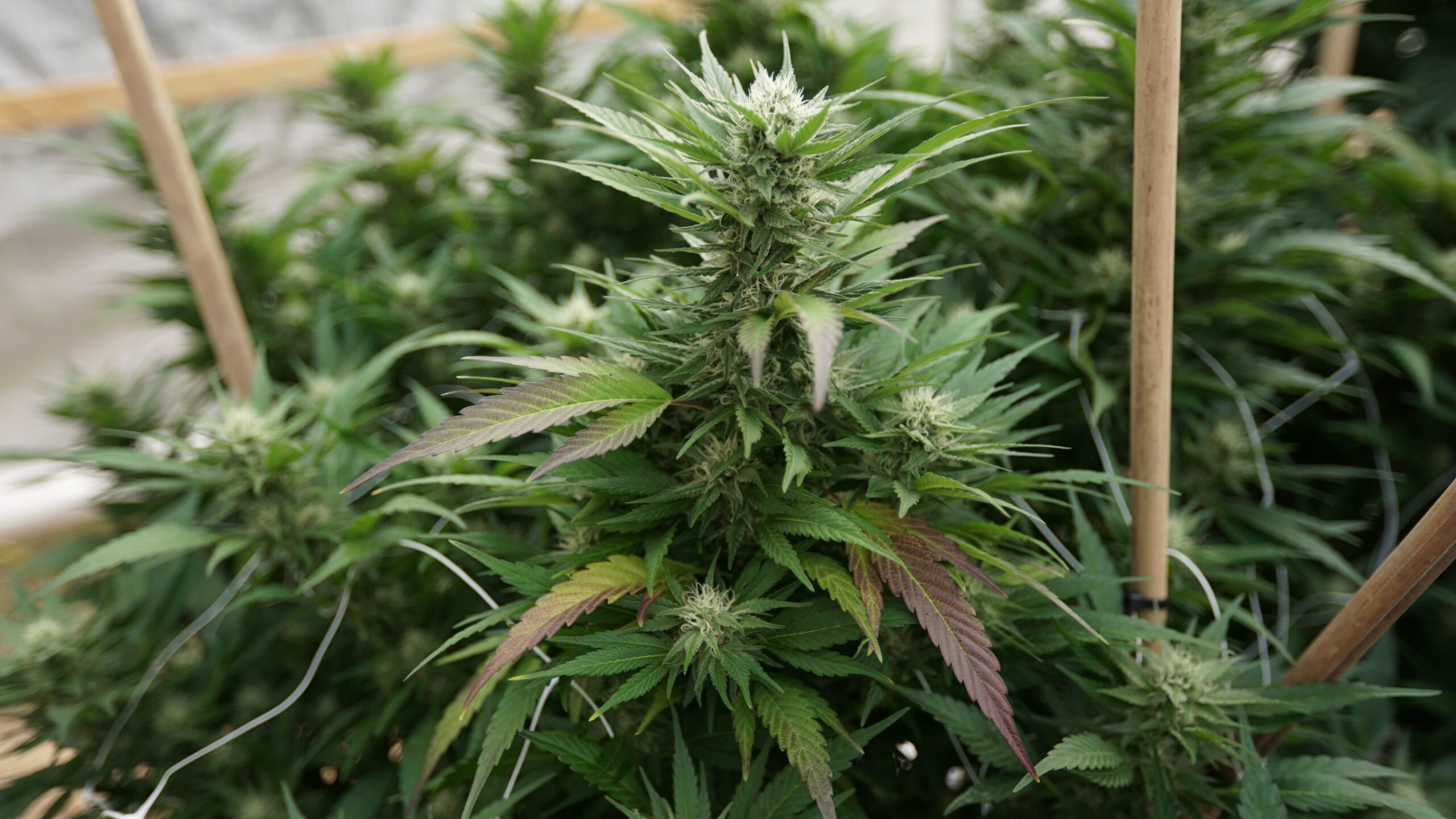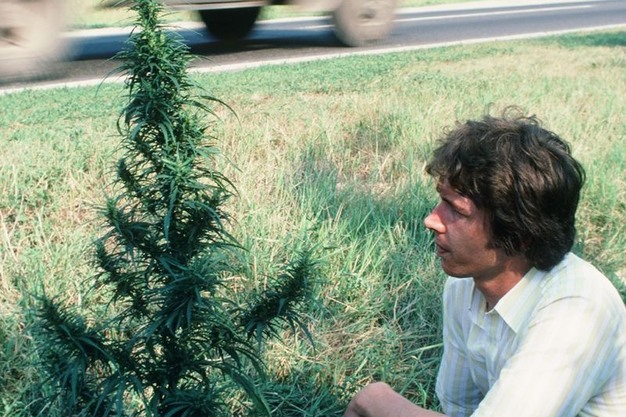“I feel like Nebraska wants to make it as uncomfortable and unbearable as possible.”
Zach Wendling, Nebraska Examiner
The green shirts filled a hearing room in Lincoln full of Nebraskans who support the legalization of medical cannabis but oppose the state’s new Medical Cannabis Commission’s proposed regulation of the product.
Thirty-two people testified against the proposed regulations on Wednesday. No one spoke up. Witnesses argued that the regulations would not be feasible for most people who need medical cannabis, and roughly half called on commissioners not to attend the hearing to hear their concerns.
“I feel like Nebraska wants to make it as uncomfortable and unbearable as possible,” said whistleblower Nathan Brown.
In the 2024 general election, 71% of Nebraska voters voted to legalize medical cannabis, and 67% voted to create a new regulatory commission. Since December, Nebraskans can legally possess up to 5 ounces of medical cannabis, as long as they have a prescription from a health care professional.
However, medical cannabis cannot yet be purchased legally in the state. Last week, again The Medical Cannabis Commission issued four of its cultivation licenses to Nancy Laughlin-Wagner of Omaha and Patrick Thomas of Raymond. Nebraska Department of Health and Human Services Chief Legal Officer Bo Botelho said both licenses were approved.
In September, the commission advanced stricter regulations compared to the emergency regulations approved by the group in June. Gov. Jim Pillen (R) approved the new regulations with one revision Limit cultivators to grow more than 1,250 flower plants at one time
The revised regulations would, for the first time, impose extensive testing and safety requirements and establish a “Recommended Directory of Health Care Professionals” for doctors in the state to recommend medical cannabis. If approved, the rule would remain in effect for 90 days.
Under the regulations, patients or caregivers can purchase up to 5 ounces of medical cannabis within 30 days, which is about 142 grams. But they could not buy more than 5 grams of delta-9 tetrahydrocannabinol (THC) from the same dispensary within 90 days. Delta-9 THC is the part of cannabis most commonly associated with a “high”.
Several witnesses said this limit was too restrictive. Testifier Shari Lawlor said a single joint typically weighs about a gram, so limiting people with medical needs to 5 grams of THC for 90 days is impractical.
State Sen. John Cavanaugh (D) of Omaha testified at the hearing that he went a step further and named a limit. a bold voter violation of the ballot language passed in Novemberwhich allowed him to hold five ounces.
The authors, to a large extent, agreed that the proposed regulation goes against what the voters asked for. Several argued that the people responsible for writing the regulations did not understand medical cannabis.
Crista Eggers, campaign manager for Nebraskans for Medical Marijuana initiatives, brought a large stack of papers representing the roughly 240,000 signatures collected between the two petitions as a visual example of the level of public support for medical cannabis.
“I guarantee you every single one of them wishes they were here today,” he said. “You know what, they shouldn’t have. They did their job. The voters spoke.”
Some witnesses criticized the limits on acceptable forms of medical cannabis. The proposed regulations exclude smoking and vaping.
Edward Williams, a veteran and member of the Legal Marijuana Now Party, said smoking or vaping is the most effective treatment method for PTSD when waking up from nightmares. The key factor is that smoking and vaping work faster than other forms of cannabis, such as edibles.
“You can’t wake up with nightmares or flashbacks and expect to wait an hour or two for an edible to work,” Williams said.
Williams wasn’t the only veteran to testify. Several others spoke about how medical cannabis has benefited them and said they’ve lost friends to suicide who didn’t have the opportunity to receive the same treatment.
Most of Wednesday’s speakers offered emotional stories about how medical cannabis can ease painful ailments for them or their loved ones. Medical cannabis has been described as a safer and cheaper option than other pain relief treatments.
“Instead of having to put my mother on morphine at the end of her life, where she then went into a coma just to control her pain, we could have had a meaningful and loving last day if they had prescribed medical cannabis,” said witness Kathy Jensen.
Registered nurse Tracey Davidson, who did not testify but attended the hearing, said she first experienced the benefits of cannabis when her sister-in-law was diagnosed with cancer about 12 years ago. Living in Colorado, he had access to medical cannabis, and said he reasoned that he could continue working and riding his bike days before his death.
“I see cannabis as medicine,” Davidson said. “Throughout my career I’ve seen it work in a variety of situations, from pain management to sleep to PTSD.”
Many witnesses also criticized the three active medical cannabis commissioners not attending the hearing, calling it “shameful” and “insulting”. The hearing was required by law.
Some witnesses also accused members of being “bought” by anti-marijuana politicians. At a commission meeting several weeks ago, witness Georganna Schroeder-Stanley said she saw “indifference, boredom and even contempt” on the faces of some of the commissioners who listened to the public’s views.
Cavanaugh interviewed nominees for the commission as part of his duties as a state senator. He said his “fears have come true” since those conversations: that members are “pursuing a political agenda” that aligns with Pillen’s.
President Monica Oldenburg did not immediately respond to a request for comment.
Several other witnesses said Nebraska is losing much-needed revenue. Brown argued that this is absurd given how easy it is for Nebraskans to smuggle cannabis across state lines.
Brown said Nebraska would lose residents because of the government’s resistance to legalizing medicinal cannabis. Another witness, Dawn Weir, said she returned to Nebraska this year because she heard medical cannabis had been legalized.
After the 2024 ballot initiatives, some witnesses questioned whether they should continue to vote if the state intervenes so easily. Cavanaugh urged attendees to continue voting, but to vote “for those who really respect you.”
Supporters of medical cannabis have long argued that the issue is nonpartisan, with several witnesses identifying themselves as registered Republicans who either regret voting Republican in 2024 or are reconsidering their party affiliation.
“I don’t know how long (my Republican record) is going to last given that this situation is going the other way,” said John Reagan, the declarer.
At the end of the hearing, the committee will decide whether to formally accept the regulations or make changes. If finalized, the regulations would be sent to the office of Nebraska Attorney General Mike Hilgers (R) for legislative review. Pillen would have the final say. Hilgers’ office did not immediately respond to a request for comment.
This story was first published by the Nebraska Examiner.
Photo by Chris Wallis // Side Pocket Images.


 Cannabis News4 months ago
Cannabis News4 months ago
 Florida4 months ago
Florida4 months ago
 Canadian Cannabis News4 months ago
Canadian Cannabis News4 months ago
 Best Practices4 months ago
Best Practices4 months ago
 Video4 months ago
Video4 months ago
 Video4 months ago
Video4 months ago
 Cannabis News4 months ago
Cannabis News4 months ago
 aawh4 months ago
aawh4 months ago




















